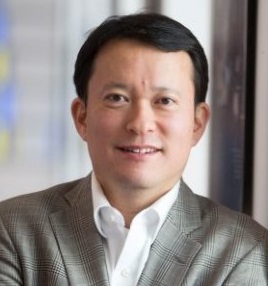- Strategy
Strategy for a Messy Tomorrow
John Kim on strategy development and implementation for an unpredictable business world
Beware of False Choices
“One thing we try to teach here at the business school is to be careful of false choices,” says John Kim, Organization and Management faculty at Emory University’s Goizueta Business School.
“Business is incredibly dynamic. Every industry is now a technology business, and the corporate playbook that evolved to protect profits is quite outdated.” Kim notes that Thomas Friedman poetically described this new normal in his 2005 book The World is Flat, and over the last 15 years, competition has only accelerated because of the explosion of two resources: cheap money and data.
Kim notes that it’s a great environment to start or fund a business because interest rates have been low for the last 10+ years. There are dozens of new entrants in all industries, and all parts of the value chain, who are often well-funded, flexible, and are not weighed down by legacy business models and assets. The big winners are the customers who have increasing choice, lower prices, and great value capture.
This new business context also requires a strategic approach to problem-solving. Kim notes that most businesses are good at what they do; they have intelligent and motivated people who solve the straight-forward problems quickly. The challenge is that the most meaningful problems are not straight-forward – they have constraints, built-in assumptions, or don’t factor in changes in customers’ preferences. Too often, business is solving yesterday’s problems.
Instead, Kim borrows a phrase from marketer Seth Godin, who coined the term ‘perfect problems’ to describe ones that do not have clear solutions as each alternative comes with constraints. This is where Kim’s warning over ‘false choices’ comes to the fore. When we are faced with problems where any possible solution seems unacceptable as it transgresses other ‘red lines,’ then it is time to think differently.
“Strategy is no longer a choice of ‘this’ or ‘that’ but much more often ‘this and that’,” he says. It is looking beyond these false, over-simplified choices that set good managers apart and allow for more complexity and ambiguity.
The Challenging Environment
From his corporate experience, Kim sees two significant challenges to strategy implementation. First, senior leaders turn over quickly. “It’s hard to have consistency of vision and leadership and implementation when there is such a movement in the C-suite with someone moving in and someone moving out every 5–6 months. So, it's not a surprise that a lot of strategies either don't follow through or there are too many cooks in the kitchen, and strategy gets a little bit muddled as a result.”
Secondly, when the strategy does eventually make it to the ground-floor and needs to be executed, things have often moved on, and the market responses are rarely the ones you expect. Riffing on Peter Drucker’s famous quote on uncertainty, Kim explains to his students that, “Instead of trying to think of something brilliant to do tomorrow, why don't you think of something very actionable today that prepares us for what we know will be a totally messy, crazy, unpredictable tomorrow.”
Kim believes that the truly differentiating factor for executives is their ability to frame problems clearly, patiently develop strategies, and use persuasion to get them implemented. Organizational decision-making is messy, and it often takes a fair amount of leadership, experience, and professional savvy to get strategies implemented.
A Business Executive’s Response
The business executive’s job is to not only set the direction, build a climate of trust, and create the energy for change—but also to be willing to test the assumptions and constraints around a given problem. Increasingly the answers will lie outside of a given industry, and thus require leaders to be broader in their horizon-scanning and more open to alternative paths forward.
In many organizations, the requirement at the very highest executive levels is one of horizon-scanning. Trying to understand what the future will bring in a macro sense, so that you can make those actionable decisions today that will prepare the business for the unpredictability of tomorrow. Kim notes that senior leaders “need to go very wide and very deep.” While this seems an unrealistic or even daunting requirement, Kim likens this to the skills of an oil wildcatter surveying 1,000 square kilometres of territory to understand where the oil might lie. This requires the ability to “rapidly pattern recognize problems…identifying the time-frame, the constraints, the assumptions, the variables, the economic drivers that will indicate where a specific cause of a problem may lie, similar to asking ‘where should we dig for oil?’”
The acquisition of these capabilities is something that John Kim believes is going to become ever more valuable in the coming years. “With the coming of machine learning, anything that can be automated will be automated. This brings a vital lesson to us—we have to play to our individual strengths, and your strength is not to be a better machine. We need to be doing all the things that the machine can't do. Which is to lead, demonstrate empathy, demonstrate decision-making, and critically to understand when a pattern is wrong and that it's actually shifting to a different pattern.”
For Kim, this is where leadership, culture, and organizational design come in. Are the right questions surfacing and being explored by a diverse, informed group of trusting leaders? Or are the only solutions being proffered ones that are mired in a slow grind of bureaucracy and alignment meetings? Those who can manage the messiness of business will be even more valued in the unpredictable tomorrows Peter Drucker identified several decades ago.
ARTICLES YOU MIGHT LIKE
BOOK REVIEW
A provocative new book reveals the downside of strategic and organizational change and the benefits of stability
DEVELOPING LEADERS QUARTERLY MAGAZINE AND WEEKLY BRIEFING EMAILS

































